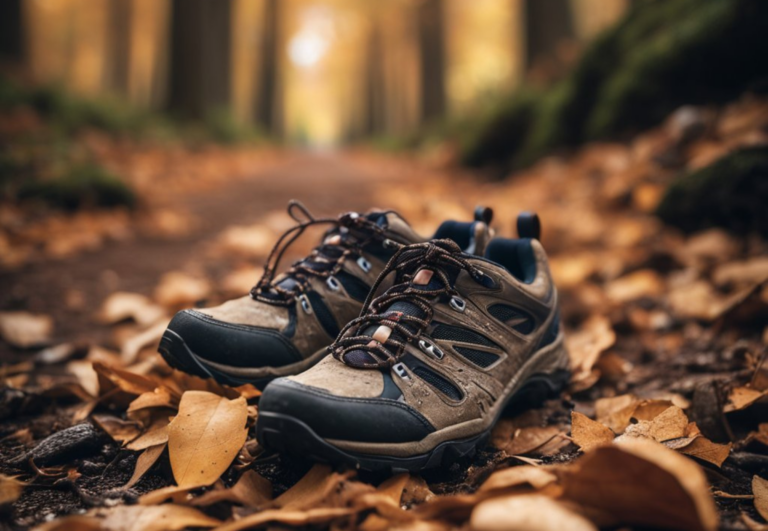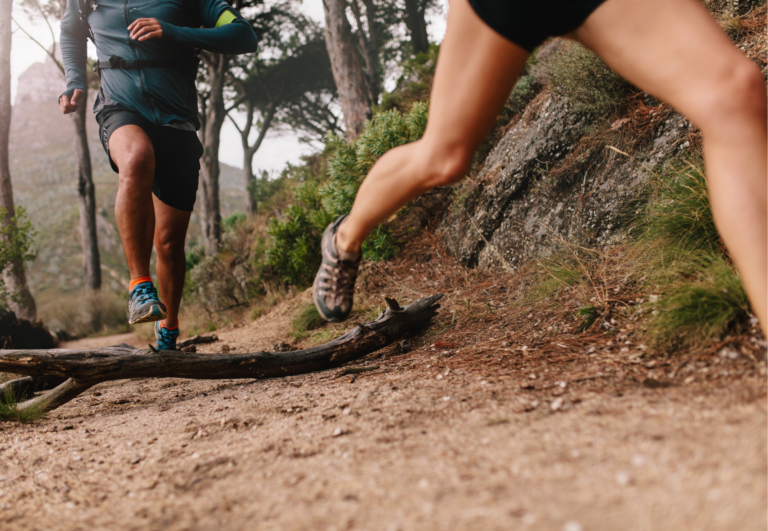Dynamic Stretching in Trail Running: Enhancing Flexibility and Minimizing Injuries
Dynamic stretching is a crucial component of a trail runner‘s routine to foster flexibility and minimize the risk of injury. As a UESCA certified running coach specializing in trail running, I guide athletes through movements that mimic their running motions, increasing the blood flow and temperature in muscles which enhances performance and reduces injury rates. These stretches, performed as part of pre-run warm-ups, are especially pivotal for the unpredictable nature of trail running.
Trail runners face a unique set of challenges, such as uneven terrain and obstacles, which demand a high degree of flexibility to navigate effectively. Incorporating dynamic stretches—like leg swings and lunge walks—into your regimen ensures that your muscles and joints are prepared for the demands of the trail. This helps in improving the range of motion and prepares the body for the dynamic activities encountered on the trails.
My experience with athletes confirms that consistent practice of dynamic stretching can lead to long-term benefits in flexibility and the overall health of a runner’s muscular and skeletal systems. Beginning each run with a series of dynamic stretches can prevent common injuries associated with overuse and acute mishaps like ankle sprains, hence promoting a safer trail running experience.
What is Dynamic Stretching for Trail Runners – an Overview
Dynamic stretching involves fluid, controlled movements to prepare your muscles and joints for physical activity. It contrasts with static stretching, which entails holding a stretch for a prolonged period. I’ll guide you through the differences and why dynamic stretching is essential for runners.
Dynamic vs. Static Stretching
Dynamic stretching increases muscle temperature and primes your body for performance by mimicking the activity you’re about to engage in. Here’s a comparison for clarity:
| Dynamic Stretching | Static Stretching |
|---|---|
| Involves active movements | Involves holding a position |
| Increases muscle temperature | Does not significantly affect temperature |
| Prepares body for physical activity | Used for cooling down |
| Can improve performance | Used to increase flexibility post-workout |
Static stretching, while useful for improving flexibility, is best performed after exercise, as it helps to reduce muscle tension.
Benefits of Dynamic Stretching for Runners
Dynamic stretching is vital for trail runners due to its numerous benefits, including:
- Enhanced Performance: The active nature of dynamic stretches increases blood flow and muscle temperature, making muscles more pliable, which can lead to improved running economy.
- Injury Prevention: It strategically activates the muscles you’ll use during your run, decreasing the risk of injury by preparing the joints and muscles in a functional way.
Here are examples of dynamic stretches beneficial for runners:
- Leg Swings: Stand with one hand on a wall for balance, swing your leg forward and back, starting small and gradually increasing the range of motion.
- Lunges: Perform walking lunges to engage your core, hamstrings, and quadriceps, mimicking the running motion.
I always emphasize to runners the importance of incorporating dynamic flexibility exercises into their warm-up routine to maximize their performance and reduce their injury risk.
Incorporating Dynamic Stretches into Pre-Run Routine

Integrating dynamic stretches into a pre-run routine prepares the muscles and tendons for the demands of trail running and may reduce the risk of muscle strain injuries.
Designing an Effective Warm-Up
My experience underscores the importance of a thorough warm-up to prepare the body for the rigors of trail running. A well-designed warm-up should start with light aerobic activity such as jogging or brisk walking for 5 to 10 minutes to increase core body temperature. Following this, dynamic stretching focusing on the major muscle groups used in running can help improve flexibility and range of motion.
Warm-Up Structure:
- Light aerobic activity (5-10 minutes)
- Dynamic stretching sequence (10 minutes)
Examples of Dynamic Stretches
Dynamic stretches involve movement and muscle activation and should mimic the actions of running. Leg swings and walking lunges are two excellent examples that target the leg muscles vital for trail running.
Dynamic Stretch Examples:
- Leg swings: Perform forward and side leg swings, 12 reps each side to mobilize hip and leg muscles.
- Walking lunges: Do lunges with a twist over the opposite knee to activate hip flexors and improve stability.
Timing and Repetition
Each dynamic stretch should be performed in sets with a proper number of repetitions to ensure muscles are ready for exercise. I recommend doing each dynamic stretch for at least 60 seconds or about 12-15 repetitions per leg. The whole sequence should feel invigorating, not exhausting, to jumpstart a great run.
Recommendations for Timing and Repetition:
- Perform each stretch for 60 seconds.
- Aim for 12-15 reps or swings per leg.
- Repeat sequence twice if possible.
Key Muscles and Movements for Trail Running
In trail running, targeted training of specific muscle groups is crucial to enhance performance and prevent injuries. Focusing on lower leg strength, hip stability, and core control is vital for maneuvering the uneven terrain.
Importance of Lower Leg Strength and Flexibility
Lower Leg Muscles:
- Calves (Gastrocnemius and Soleus): Essential for push-off power and shock absorption.
- Tibialis Anterior: Contributes to dorsiflexion and stabilizing the ankle.
Flexibility Exercises:
- Calf raises: To build strength.
- Downward dog pose: Stretches the calves and hamstrings improving ankle flexibility.
Strong and flexible lower legs allow for quick adaptations to the ground, minimizing the risk of ankle sprains and strains.
Stabilizing Hips and Knees
Hips and Knees:
- Hip Flexors and Extensors: They provide stability during the running gait.
- Quadriceps and Hamstrings: Essential for knee stability and power.
Stabilization Exercises:
- Lunges: Strengthen the quadriceps and hamstrings, supporting the knees.
- Side leg raises: Target the hip abductors for improved lateral stability.
Hip and knee stability prevent unwanted movements that can lead to overuse injuries, particularly in scenarios where the trail requires sudden changes in direction.
Core and Torso Control for Better Balance
Core and Torso:
- Rectus Abdominis and Obliques: Help maintain an upright posture.
- Erector Spinae: Supports the spine during impact and uneven footing.
Control Exercises:
- Planks: Strengthen the entire core for better torso stability.
- Twists: Enhance the obliques’ ability to manage rotational forces.
A strong core ensures that my balance is maintained across variable terrain, reducing the chance of falls and providing a stable platform for lower body movements.
Injury Prevention and Management
Trail running involves the risk of various injuries, with the lower leg being the most affected area. As a UESCA certified running coach, I advocate for proactive measures to mitigate injury risks, including dynamic stretching, to enhance flexibility and safeguard against common musculoskeletal issues.
Common Trail Running Injuries
Knee and ankle injuries are prominent among trail runners, often manifesting due to the uneven terrain encountered. Overuse injuries account for more than 70% of these issues, highlighting the need for runners to incorporate comprehensive training and preventive strategies.
- Knee Injuries: Including sprains and patellofemoral pain syndrome.
- Ankle Injuries: Sprains are the most acute common injury.
- Overuse Injuries: Stress fractures and tendonitis are prevalent.
Role of Dynamic Stretching in Injury Risk Reduction
Dynamic stretching before running can activate muscles and increase blood flow, thus reducing the risk of musculoskeletal injuries. These stretches mimic the movements of trail running, preparing the body for the impact and variability of the terrain.
- Benefits: Improved range of motion, muscle temperature, and neuromuscular function.
- Examples: Leg swings, lunges with a twist, and high knees.
When to Use Dynamic Stretching for Rehabilitation
In the event of an injury, rehabilitation should start with a focus on regaining mobility and strength. Dynamic stretching can be a valuable component of a rehabilitation program once acute pain has subsided and healing allows for movement.
- Early Rehabilitation: Start with gentle, controlled dynamic movements.
- Progressive Rehabilitation: Incorporate more challenging stretches to rebuild strength and balance gradually.
By following these guidelines, trail runners can manage injury risks and maintain a healthy and active lifestyle.
Advanced Techniques and Considerations

Incorporating advanced techniques into your training can significantly enhance your flexibility and reduce the risk of injury on challenging trail terrains. As a UESCA certified running coach, I’ve found these methodologies to be critical in tackling unpredictable elements like rocks, branches, and shifts in elevation.
Plyometrics and Advanced Dynamic Movements
Plyometrics exercises are a cornerstone of advanced dynamic stretching, focusing on improving explosive power and neuromotor control. A typical trail runner’s plyometrics routine might include:
- Box Jumps: Propel yourself onto a stable surface and gently step back down to foster power and control.
- Bounding: Leap forward from one leg to another, focusing on height and distance to enhance leg strength and balance.
During these movements, maintaining proper form is critical to prevent injury and ensure the most benefit.
Modifications for Different Skill Levels
Tailoring workouts to accommodate varying skill levels is vital for progress and safety. Beginners should start with foundational movements:
- Modified Box Jumps: Use a lower height to promote confidence and technique.
- Assisted Bounding: Utilize a resistance band or a partner for stability and support.
As skill level advances, intensity and complexity can gradually increase.
Trail Challenges and Adaptations
Trail running’s unpredictable nature demands specific adaptations:
- Rock Navigation: Practice short, quick plyometric hops to replicate navigating over rocks.
- Branch Maneuvers: Include lateral plyometric drills to simulate moving around branches.
- Elevation Acclimation: Integrate hill sprints to improve agility and strength on inclines.
Prehabilitation programs can prepare you for these elements by strengthening the entire kinetic chain required for controlled, adaptive movement on trails.






